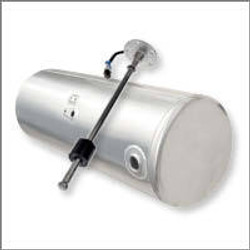The International 8100-8300 Fuel Tanks category offers various fuel system components and accessories. This includes replacement fuel tanks, brackets, caps, and senders. These durable, reliable products are designed for easy installation, helping to keep your truck running efficiently. With various sizes, materials, and styles available, you can find the right parts to improve your truck's performance and fuel economy.
Frequently Asked Questions About International 8100-8300 Fuel Tanks
What fuel tank sizes are available for my International 8100-8300 series truck?
We offer fuel tanks ranging from 50 to 150 gallons for International 8100-8300 series trucks. The most common sizes are 75, 100, and 120 gallons. Your specific model year and chassis configuration will determine which sizes fit properly. Trucks with shorter wheelbases typically accommodate tanks up to 100 gallons, while longer wheelbases can handle the larger 120-150 gallon options. Always verify your frame rail measurements before ordering.
Will these fuel tanks fit my specific International model year?
Our fuel tanks are designed to fit International 8100, 8200, and 8300 series trucks manufactured from 1989 through 2017. However, there are important variations between model years. Pre-2003 models use different mounting brackets than 2003-2017 models. Additionally, trucks with aftermarket exhaust systems or modified frame rails may require different tank configurations. We recommend calling our technical support team with your VIN number to ensure proper fitment.
Are these aluminum or steel fuel tanks, and which is better for my application?
We carry both aluminum and steel fuel tanks. Aluminum tanks are lighter (reducing overall vehicle weight by 40-60 pounds), resist corrosion better, and typically last 15-20 years. Steel tanks cost about 30% less upfront but are heavier and may develop rust after 8-10 years, especially in regions using road salt. Most owner-operators prefer aluminum for long-term value, while fleet operators often choose steel for lower initial cost. Both types meet DOT certification requirements.
What mounting hardware and straps come with these fuel tanks?
Fuel tanks are sold separately from mounting hardware in most cases. You will need to purchase tank straps, mounting brackets, and rubber isolators separately unless specifically noted as a complete kit. Original equipment straps can often be reused if in good condition, but we recommend replacing straps that show signs of corrosion or stretching. Standard strap kits run between $45-85 depending on tank size. Some tanks include pre-drilled mounting holes while others require drilling during installation.
Can I install these fuel tanks myself, or do I need a professional?
Installation typically takes 3-4 hours for experienced mechanics and requires basic hand tools plus a floor jack or transmission jack to support the tank during mounting. The most challenging aspects are properly aligning the tank with existing fuel lines and ensuring adequate clearance from exhaust components. You must drain and properly dispose of existing fuel, disconnect battery cables, and follow proper safety procedures. Many customers successfully complete DIY installations, but we recommend professional installation if you lack experience working with fuel systems or heavy components.

 International 8100-8300 Fuel Tank Acc.
International 8100-8300 Fuel Tank Acc.
 International 8100-8300 Fuel Tank Bracket-Strap
International 8100-8300 Fuel Tank Bracket-Strap
 International 8100-8300 Fuel Tank Caps
International 8100-8300 Fuel Tank Caps
 International 8100-8300 Fuel Tank Covers & Bras
International 8100-8300 Fuel Tank Covers & Bras
 International 8100-8300 Fuel Tank Senders
International 8100-8300 Fuel Tank Senders



